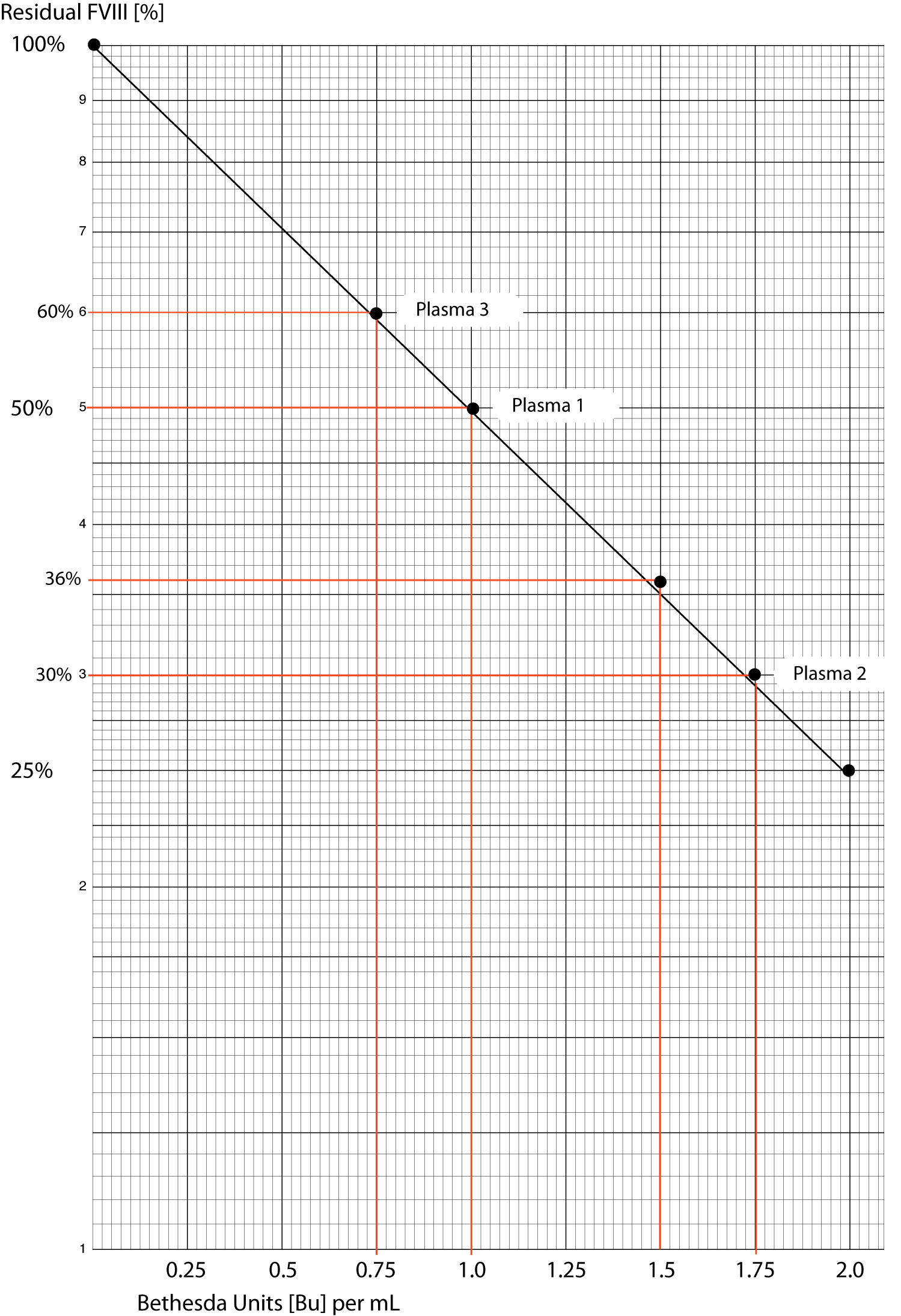Haematology Watch, Vol.4 , Issue 2.
LABORATORY HAEMATOLOGYBethesda Assay
Mehmood
Introduction:
When inhibitors develop against coagulation factors, their management requires their quantification. This can be done by Bethesda assay.
Diagnosis of inhibitors, especially FVIII inhibitors, involves following steps:
i. Analyzing PT & APTT.
ii. Excluding Heparin therapy.
iii. Demonstrating presence of inhibitor by 1:1 mixing study.
iv. Differentiating from lupus anticoagulant.
v. Documenting low FVIII level.
vi. Quantifying strength of the inhibitor in (Bethesda) units.
Principle:
When FVIII is incubated with test plasma containing inhibitor to FVIII, the amount of residual FVIII is neutralised over time. If concentration of FVIII added and neutralised is measured, the amount of inhibitor can also be measured in units. In Bethesda assay, one Bethesda unit is the amount of inhibitor required to neutralise 50% FVIII in normal plasma (containing 100 IU/dL FVIII) after incubating at 37 C for 2 hours.
Requirements:
1. Consumables: Test tubes, Plasma containing FVIII, Test plasma containing inhibitor to FVIII, Imidazole buffer, Tips of Micropippette .
2. Non-consumables: Water bath, Micropippette, Stop watch.
Method:
1. Water bath is turned on at 37C.
2. Place 5 new glass test tubes in the water bath. Label them as 1, 2,...,5.
3. Normal platelet-poor plasma is taken by pipetting 0.2 mL in the test tube 1. Tube 1 is kept undiluted and thus coagulation factors are 100%.
4. Test platelet-poor plasma is pipetted 0.2 mL in tubes 2 to 5.
5. Buffer is added in tube 1 to tube 5 by pippetting 0.2 mL. FVIII activity is now 50% in these.
6. Doubling dilutions of test serum are made starting from Tube 2 to Tube 5.
7. All the tubes are placed in the water bath at 37C for 2 hours.
8. FVIII activity is measured such that the amount in Tube 1 is taken as 100%. FVIII activity in other tubes is given a percentage according to relation with that in Tube 1. For example, if it is 1.0 in Tube 1 and 0.75 in Tube 2, then Tube 2 has 75% activity.
9. The activities are plotted on a log-linear graph, such that FVIII activity is presented on y-axis while strength of inhibitor (in Bethesda Units) is presented on x-axis.
10. The 100% activity is plotted on top of y axis in line with 0 inhibitor at x-axis. This is point A.
11. A line is drawn from 50% activity on y-axis to touch a line drawn from 1 Bethesda unit from x-axis. The point where these two lines meet is point B.
12. Draw a line starting from point A, crossing point B, and moving towards x-axis. This becomes line A-B.
13. Now, a line is drawn from the activity of FVIII in Tube 2 and is dropped vertically towards x-axis where it touches the line A-B. When it touches x-axis, Bethesda Unit is noted down.
14. Repeat the procedure for all the tubes.
15. Note down the Bethesda Units of those tubes whose FVIII activity is 25-75%; take their mean. Or note down the FVIII activity of a tube closest to 50% activity.
16. If there is a tube containing 50% FVIII activity or close to it, note down its Bethesda unit value on x-axis and multiply with the dilution factor of the tube to find actual (and increased) value of inhibitor in it in Bethesda Units.
17. If there is no tube containing 50% FVIII activity or close to it, note down any two tubes having cloesr values to 50% than others, e.g. 60% and 40%. Take the mean of the Bethesda units for the two tubes, and multiply with the mean of the dilution factors of the two tubes to find actual value of inhibitor in test plasma in Bethesda units.
18. Lable test plasma as having low titre if Bethesda units are < 5, while label it as high if the value is > 5 BU.
19. Comment on kinetics of inhibitor i.e. linear or complex.

Practical-Haemostasis.com

Designed by http://www.mitchinson.net